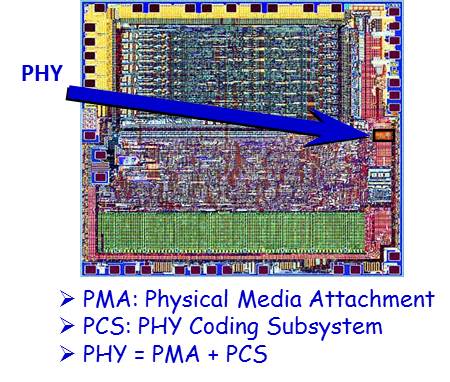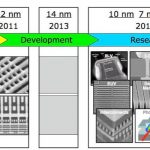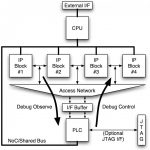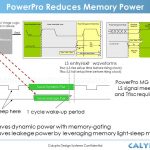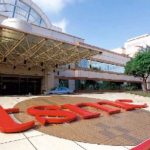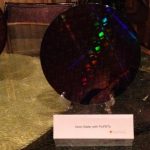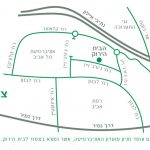Can’t make it to Santa Clara? Join us online!
The detailed 2013 CPTF agenda is now up in preparation for the February 5th event at the Santa Clara Convention Center. This is one of the rare times that you can get a free lunch! Watch this quick video to see what is in store for us this year. Dr. Paul McLellan and I will be there so please introduce yourself, it would be a pleasure to meet people who follow us on SemiWiki. Space is limited so register today HEREor click on the banner below. Did I mention it is FREE? This is an excellent opportunity to mingle inside the fabless semiconductor ecosystem.
Agenda
[TABLE]
|-
| valign=”top” |
| valign=”top” | 8:00am – 9:00am
| valign=”top” |
| valign=”top” | Registration & Continental Breakfast
|-
| valign=”top” |
| valign=”top” |
| valign=”top” |
| valign=”top” | KEYNOTE SESSION
|-
| valign=”top” |
| valign=”top” | 9:00am – 9:20am
| valign=”top” |
| valign=”top” | Welcome & Introduction
Emcees:
- Bruce Kleinman, Vice President, Product Marketing, GLOBALFOUNDRIES
- Mike Cadigan, General Manager, IBM Microelectronics, Systems and Technology Group
|-
| valign=”top” |
| valign=”top” | 9:20am – 10:00am
| valign=”top” |
| valign=”top” | Innovations for Next Generation Scaling
Dr. Gary Patton, Vice President of Semiconductor Research & Development Center, IBM
|-
| valign=”top” |
| valign=”top” | 10:00am – 10:30am
| valign=”top” |
| valign=”top” | Common Technology Platform, Uncommon Solutions
Mike Noonen, Executive Vice President, Global Sales, Marketing, Quality and Design, GLOBALFOUNDRIES
|-
| valign=”top” |
| valign=”top” | 10:30am – 11:00am
| valign=”top” |
| valign=”top” | Technology Pioneer, Beyond HKMG Technology
Dr. KH Kim, Executive Vice President, Foundry Business, Samsung
|-
| valign=”top” |
| valign=”top” | 11:00am – 11:30am
| valign=”top” |
| valign=”top” | Partnering for Innovation to Drive Diversity
Dr. Dipesh Patel, Executive Vice President and General Manager, Physical IP Division, ARM
|-
| valign=”top” |
| valign=”top” | 11:30am – 6:00pm
| valign=”top” |
| valign=”top” | EXHIBITS OPEN IN PARTNER PAVILION
|-
| valign=”top” |
| valign=”top” | 11:30am – 1:00pm
| valign=”top” |
| valign=”top” | Lunch
|-
| valign=”top” |
| valign=”top” |
| valign=”top” |
| valign=”top” | TECHNICAL SESSIONS
|-
| valign=”top” |
| valign=”top” | 1:00pm – 1:30pm
| valign=”top” |
| valign=”top” | Fireside Chat
- Handel Jones, Owner and CEO, International Business Strategies, Inc.
- Brian Fuller, Journalist, EE Times
|-
| valign=”top” |
| valign=”top” | 1:30pm – 2:30pm
| valign=”top” |
| valign=”top” | Advances in 14nm FinFET Process & Manufacturing
- Dr. Shawn Han, Vice President, Foundry Marketing, Samsung
- Dr. Antun Domic, Senior Vice President and General Manager, Implementation Group, Synopsys
|-
| valign=”top” |
| valign=”top” | 2:30pm – 2:50pm
| valign=”top” |
| valign=”top” | Break w/Refreshments in Partner Pavilion
|-
| valign=”top” |
| valign=”top” | 2:50pm – 3:50pm
| valign=”top” |
| valign=”top” | Advanced Technology-Design-Manufacturing Co-optimization — A Triathlon
- Subramani Kengeri, Vice President, Technology Architecture, Office of the CTO, GLOBALFOUNDRIES
- Joe Sawicki, Vice President & General Manager, Design-to-Silicon Division, Mentor Graphics
|-
| valign=”top” |
| valign=”top” | 3:50pm – 4:50pm
| valign=”top” |
| valign=”top” | Next Generation R&D and Advanced Tools for 14nm and Beyond
- Dr. Mukesh Khare, Director, Semiconductor Technology Research, IBM Research
- Dr. Supratik Guha, Director of Physical Sciences Department, IBM Research
- Dr. Vassilios Gerousis, Distinguished Engineer & Technologist, Cadence
|-
| valign=”top” |
| valign=”top” | 4:50pm – 5:00pm
| valign=”top” |
| valign=”top” | Wrap-Up
Ana Hunter, Vice President of Foundry Business, Samsung
|-
| valign=”top” |
| valign=”top” | 5:00pm – 6:00pm
| valign=”top” |
| valign=”top” | RECEPTION IN PARTNER PAVILION
|-



